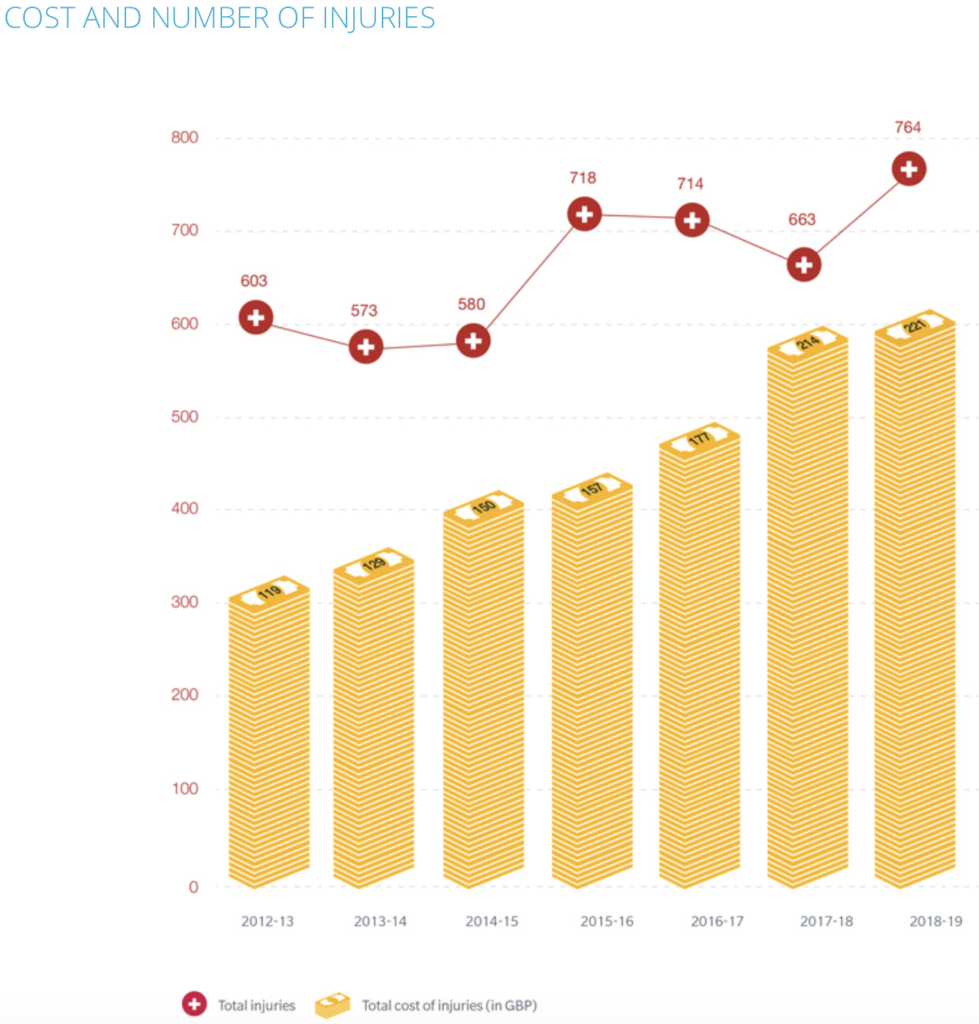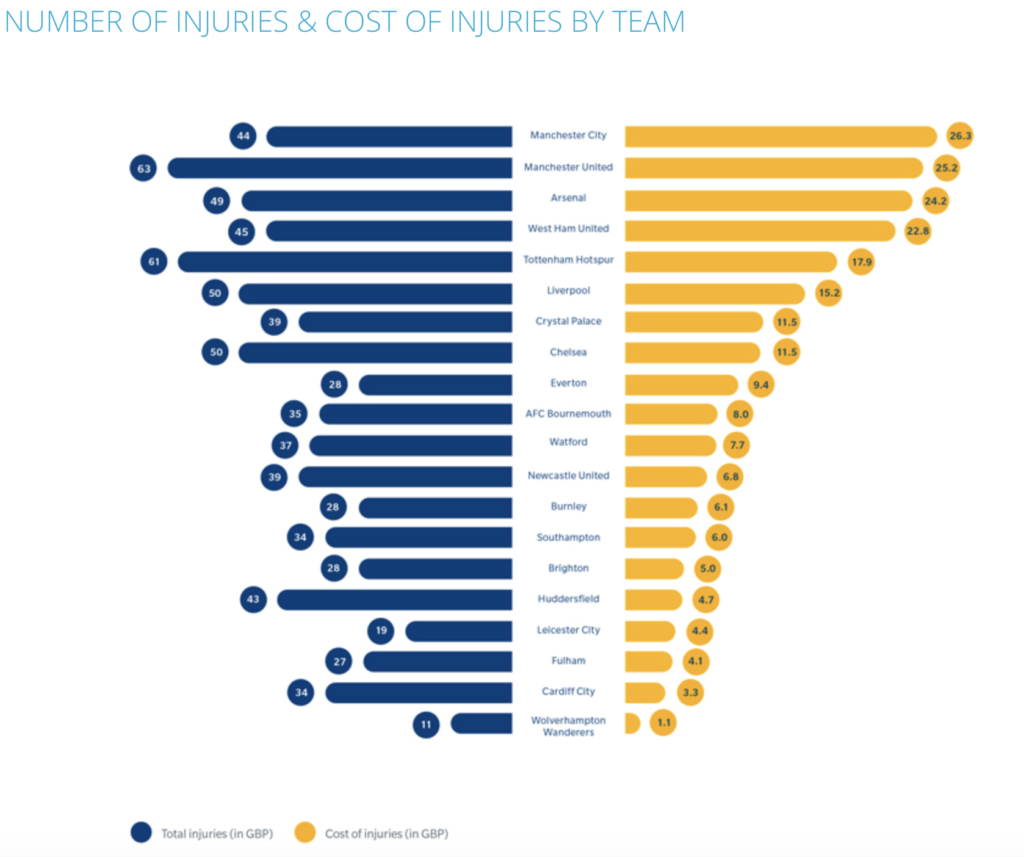August 16 – Shorter summer breaks and increased international workloads are resulting in an increasing number of injuries. The evidence is in the numbers and the costs of those injuries.
Insurance broker and risk adviser Marsh JLT Specialty in its Football Injury Index 2019 finds that “the 20 English Premier League clubs had a total of 764 football injuries during the 2018-19 season – the most in the last eight years.”
The two Manchester clubs had the highest costs when it came to injuries. Manchester City spent £26.3 million on injured players who collectively spent 1,407 days out of action (44 injuries in total). Manchester United spent £25.17 million losing 1,238 days with an injury total of 63.
While they paid out the most, Marsh point out “the clubs most affected by injuries throughout the season were West Ham (2,003 total days out), Arsenal (1,771 days out) and Tottenham (1,652 days out); these three clubs also topped the list for average unavailability of players each match day.”
The top six clubs in Marsh’s analysis account for 54% of the costs.
“The top six have experienced an average 48% increase in salaries paid to injured players since 2016, with Tottenham Hotspur particularly affected, seeing costs rise by 110% in the last three years,” say Marsh.
Lennox Batten, Managing Director, Special Risks, Marsh JLT Specialty, says that as clubs are pushed to paying more for the top talent the pressures of a crowded calendar for that top talent will inevitably lead to an increase in injuries and cost.
“The 2018-19 season saw record levels of injuries in the Premier League, notably driven by an abnormally high number of injuries in August and December as a likely consequence of the 2018 World Cup, and a relentless footballing calendar,” said Batten.
“The fact that injury hit English clubs dominated European competitions last season illustrates just how elite clubs have the ability to continue competing through injury crises. However, with wages set to continue rising and the footballing calendar remaining as congested as ever, the cost of injuries – effectively the cost of doing business in the game – is likely to keep increasing in the long term.”
Contact the writer of this story at moc.l1751417405labto1751417405ofdlr1751417405owedi1751417405sni@n1751417405osloh1751417405cin.l1751417405uap1751417405




